
Roots
In the vibrant expanse of human heritage, where threads of tradition and identity intertwine, textured hair stands as a living testament to ancestral wisdom. For communities across Africa and its diaspora, hair is far more than mere adornment; it serves as a profound spiritual conduit, a visible narrative of lineage, and a canvas for communal values. The concept of “purity” concerning textured hair in these ancestral contexts was not about conformity to external ideals or a lack of alteration. It concerned an authentic state of being, a reflection of spiritual alignment, social standing, and an unblemished connection to heritage.
This understanding flowed from the very origins of these cultures, where hair was seen as the highest point of the body, closest to the divine, a literal extension of the spirit and a repository of personal and collective memory. The journey into how ancestral customs shaped this sense of purity begins by unearthing the elemental truths of textured hair itself, its biology intimately intertwined with ancient practices, and the profound lexicon used to articulate its significance.
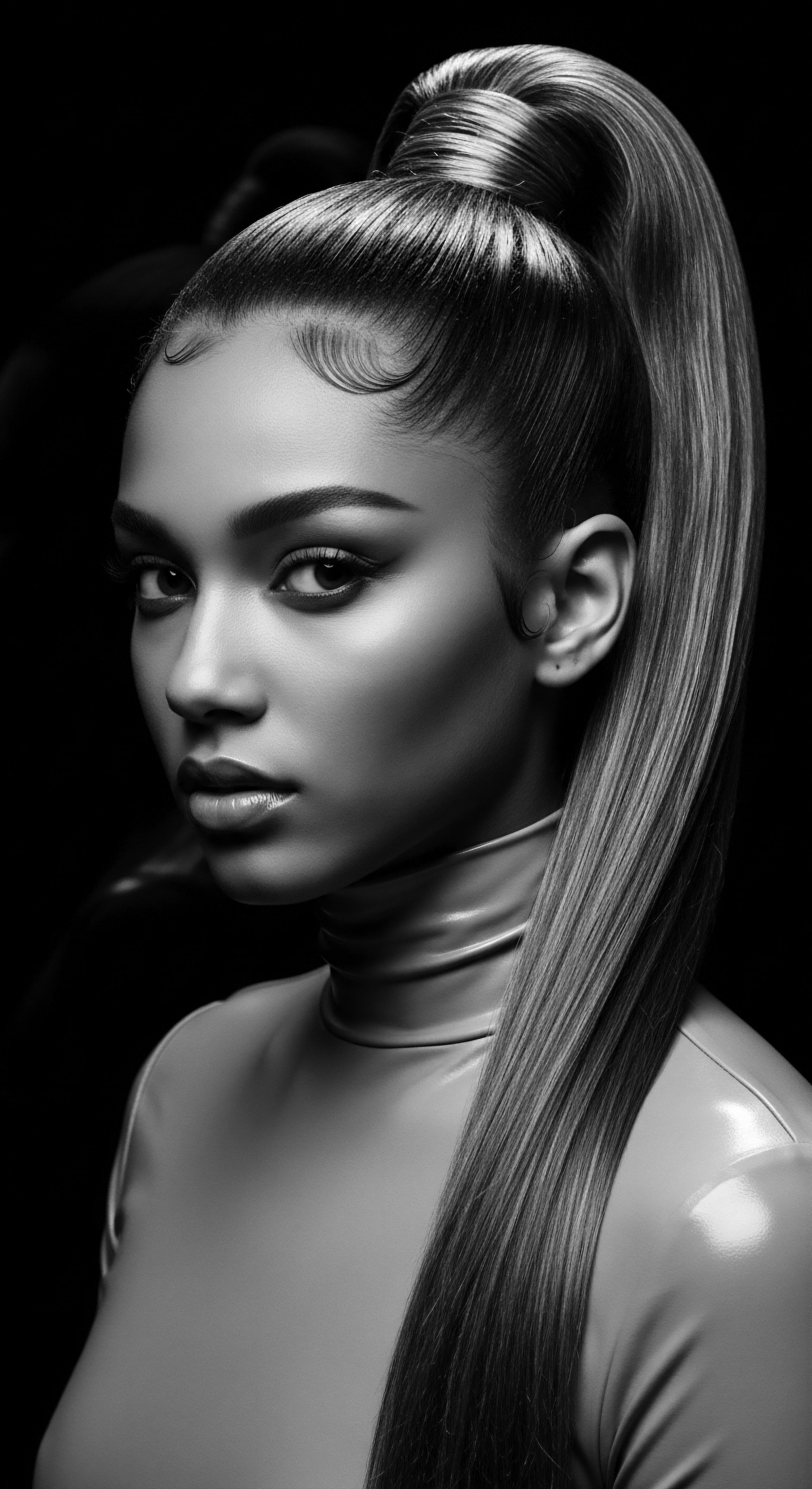
The Helix’s Ancestral Blueprint
The intricate geometry of textured hair, with its unique curl patterns and density, offered early communities direct cues about its inherent qualities. Anthropological studies suggest that these varied hair forms evolved as adaptations to diverse environmental conditions, with tightly coiled hair providing advantages in hot, sunny climates by facilitating air circulation and offering protection against intense solar radiation. This innate resilience and protective capacity likely contributed to its reverence.
From a heritage perspective, this inherent structure was not a flaw to be corrected; it was a distinctive mark of creation, a gift to be honored. The way ancestral peoples perceived and interacted with these elemental qualities shaped their cultivation practices, which sought to maintain the hair’s natural vitality rather than imposing foreign standards upon it.
Every curl, every coil, told a story of adaptation, of belonging, and of a shared lineage. The earliest evidence of Africans adorning their hair dates back millennia, with ancient Egyptian depictions showcasing elaborate hairstyles, wigs, and braids signifying social status and religious beliefs. These practices underscore that while hair was manipulated and styled, its intrinsic nature was revered. The manipulation was a creative expression, an act of ritual, rather than an attempt to alter its fundamental character.
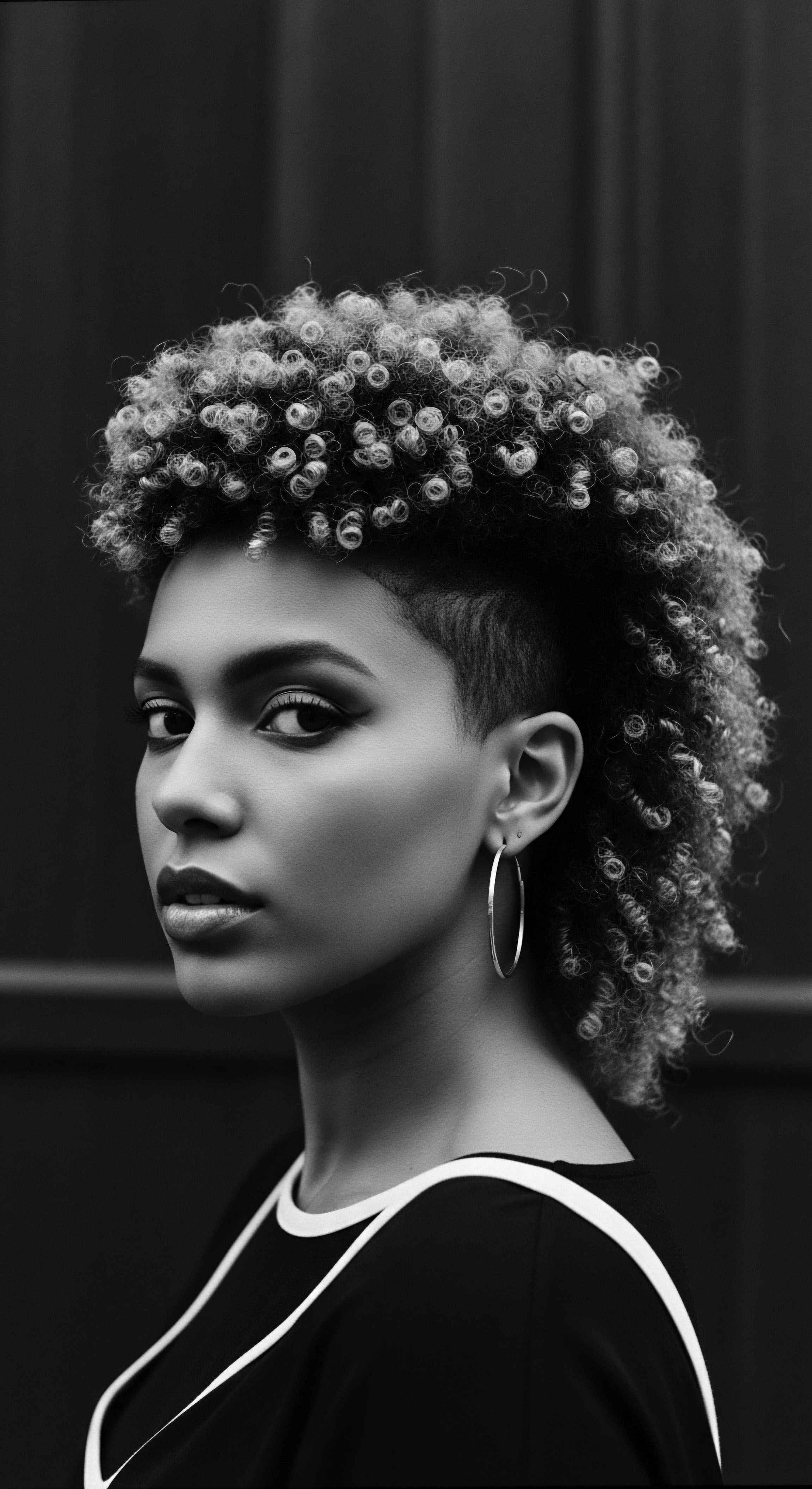
Whispers from the Growth Cycle
Ancestral customs often aligned intimately with the natural rhythms of life, and hair growth cycles were no exception. While modern science details the anagen, catagen, and telogen phases of hair growth, ancient wisdom observed these cycles through the lens of lived experience and spiritual continuity. Hair was a living entity, constantly regenerating, symbolizing life itself and the enduring connection between generations. Practices such as ritual shaving, often marking rites of passage like initiation into adulthood or periods of mourning, directly engaged with these cycles.
For instance, the Maasai people held specific beliefs regarding hair and spiritual energy, with the process of hair shaving and regrowth integral to various rites of passage, symbolizing a new stage in life and a reaffirmation of spiritual connection. This demonstrated a deep understanding of hair’s renewal, seeing it not as a static feature, but a dynamic aspect of one’s journey through life.
Ancestral reverence for textured hair was not about aesthetic ideals; it was about honoring hair’s inherent nature, a reflection of spiritual and social alignment.
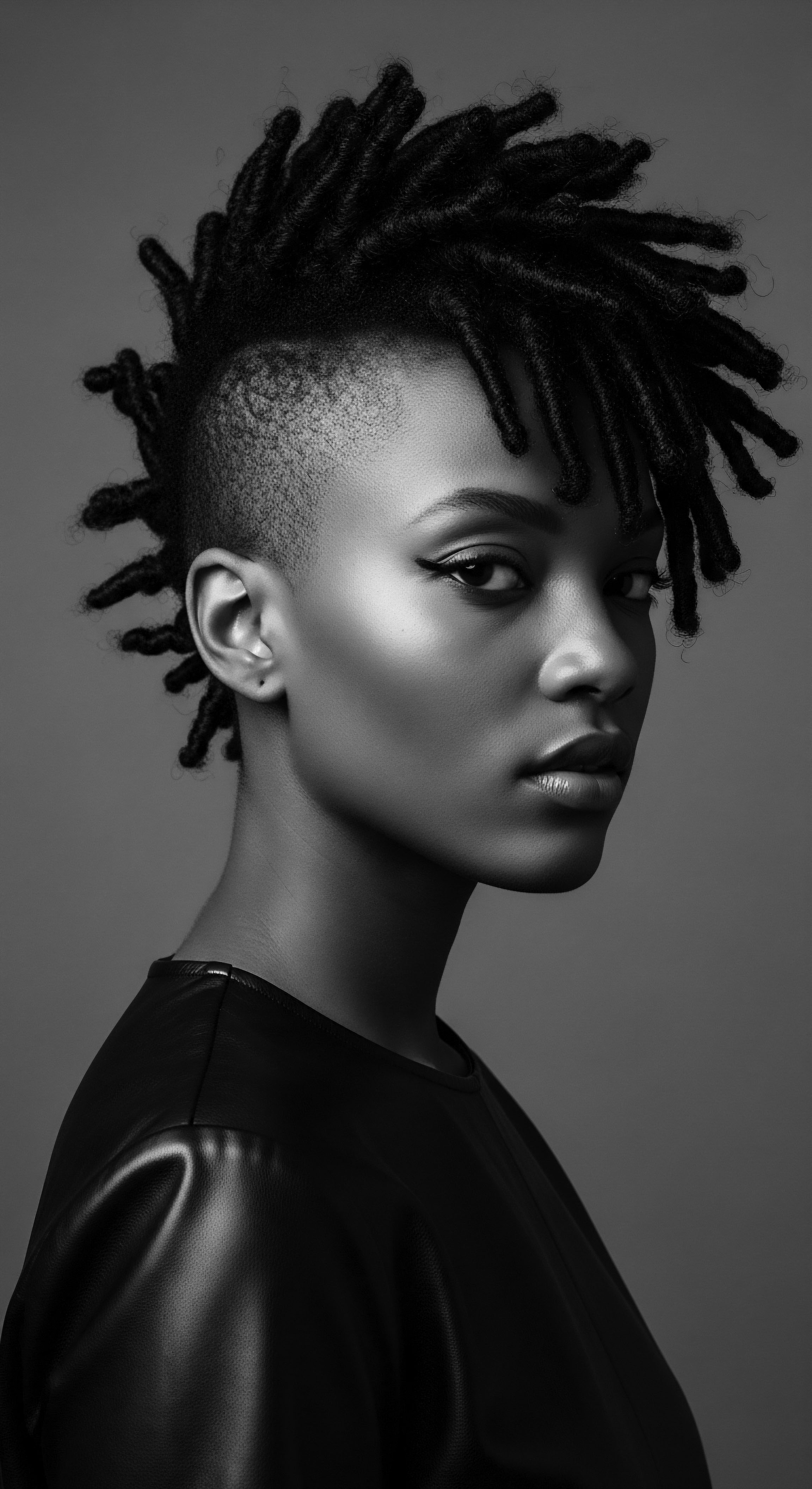
Naming the Strands of Lineage
The language used to describe textured hair in ancient African societies was rich with meaning, reflecting its symbolic and practical significance. Terms were not simply descriptive of texture; they conveyed social signals, spiritual connections, and communal identity. Hair was a visual language, telling stories of heritage and identity.
For example, the Fulani people of West Africa are known for their distinctively braided styles, where adornments of beads and cowrie shells could signify everything from fertility to social standing. The very names given to styles or hair types often carried a sense of inherent worth and belonging, highlighting that hair purity was about its authenticity to one’s lineage and cultural group.
- Himba Otjize ❉ A paste of red ochre and butterfat, applied to hair and skin, symbolizing the Himba people’s connection to the earth and ancestors.
- Yoruba Irun Kiko ❉ A thread-wrapping style that held meaning related to femininity, marriage, and coming-of-age rites in Yoruba culture.
- Maasai Olusungu ❉ Dreadlocks worn by warriors and elders, symbolizing strength, courage, wisdom, and a sacred gift from the creator.
This linguistic precision underscores that hair was not merely a physical attribute; it was a sacred aspect of self, infused with collective memory and ancestral echoes.
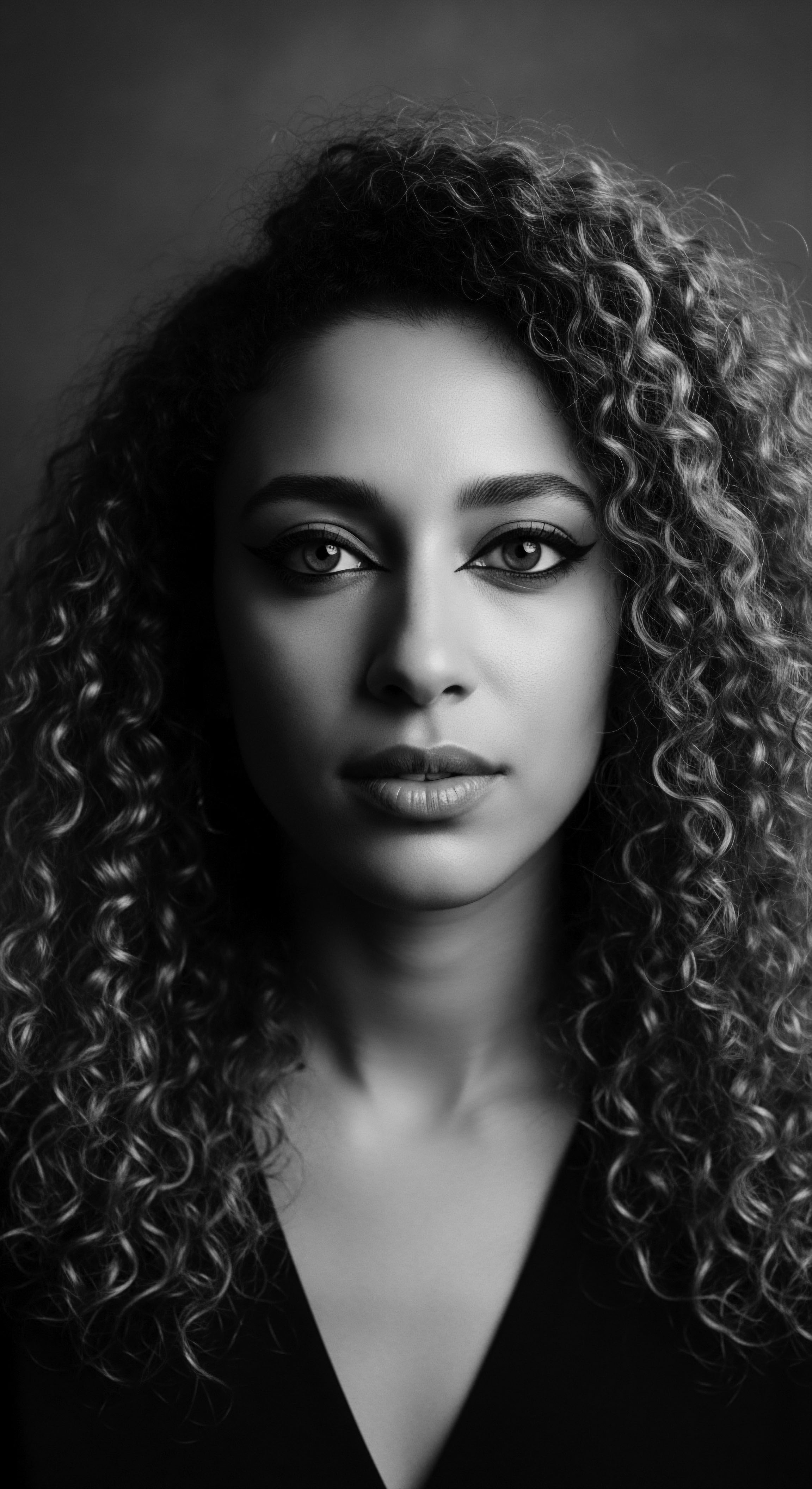
Ritual
From the foundational understanding of textured hair, we journey to the active engagement with it, where ancestral customs shaped styling into an intricate web of ritual, identity, and protection. The art and science of textured hair styling in these ancient contexts were never solely about aesthetic appeal; they were deeply imbued with social, spiritual, and protective purposes. The purity of a style, therefore, extended beyond its visual neatness, encompassing its adherence to tradition, its ability to convey social status, and its function in connecting the wearer to their community and spiritual world. Ancestral practices consistently reveal how hair became a canvas for cultural narratives, each braid, twist, or adornment a deliberate act of communication.

Styling as Sacred Expression
In many African societies, hair styling sessions were communal activities, opportunities for storytelling, learning, and strengthening social bonds. These gatherings were living archives of cultural knowledge, where oral histories and spiritual insights were passed down through generations. The act of braiding, for instance, became a potent ritual of solidarity and community, especially among enslaved populations, who used these sessions to maintain morale and cultural continuity amidst profound upheaval. The styles themselves were rarely arbitrary; they were meticulously crafted, often signifying age, marital status, tribal affiliation, or a particular spiritual state.

What Did Braids Signify in Ancient Communities?
Braids held profound meanings in ancient communities. For the Ashanti people of Ghana, Adinkra symbols were sometimes woven into hairstyles, each symbol carrying a specific message or proverb, communicating concepts like love, wisdom, strength, or unity. These intricate patterns served as a visual language, making the wearer’s hair a living script of their life and community.
Likewise, the number of braids, their placement, and the incorporation of adornments like beads or shells could convey messages about personal experiences, life stages, or even mourning. This highlights how purity in styling was linked to the fidelity of communication through these visual cues, ensuring one’s hair spoke truthfully about their place within the collective.
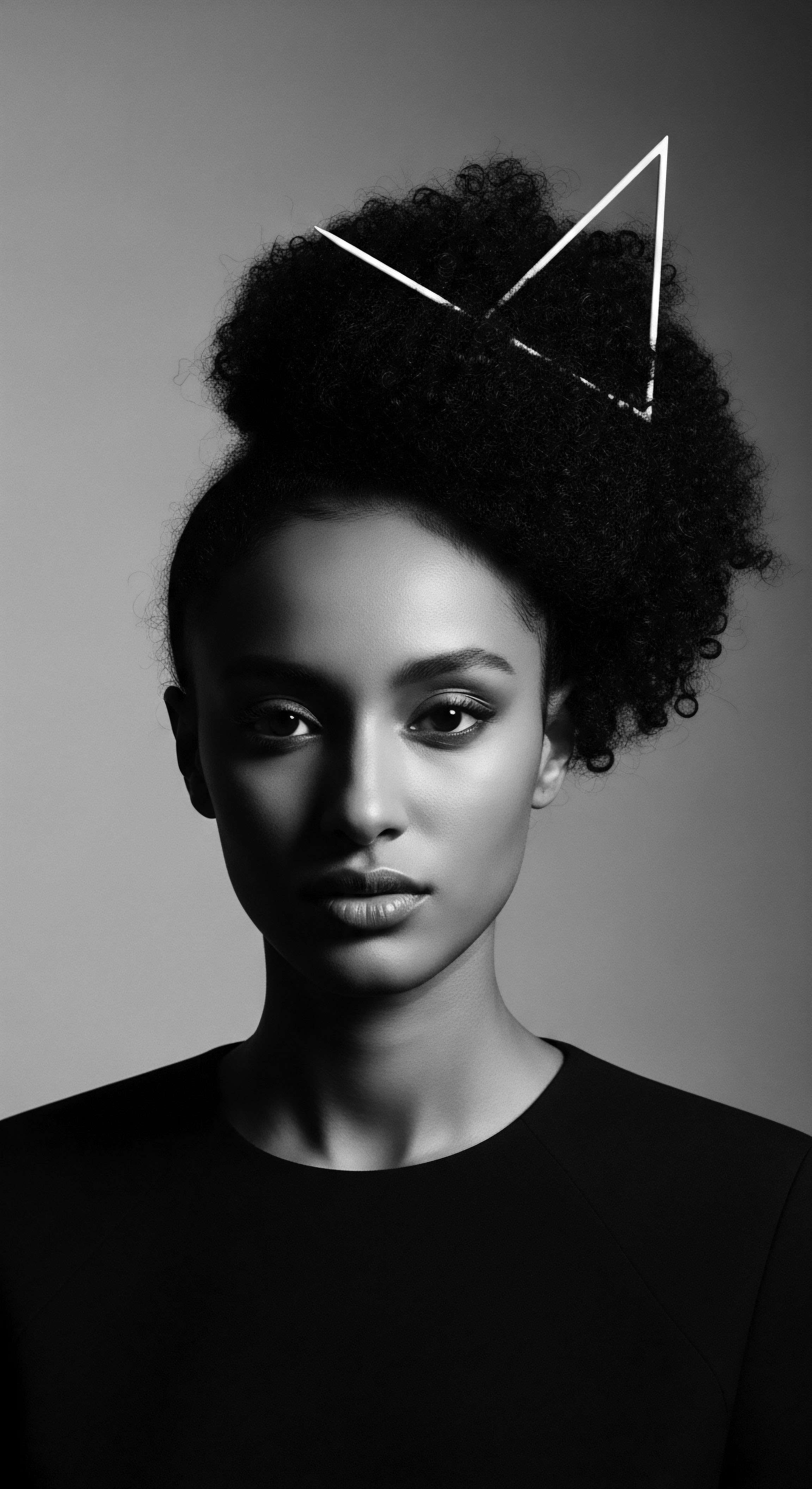
Locs and the Continuum of Being
The practice of forming locs, or dreadlocks, holds a history that reaches back thousands of years across various cultures, including ancient Egypt, the Maasai, and Himba tribes. For many, locs are a powerful symbol of spiritual connection, freedom, and cultural identity. In some Rastafarian beliefs, locs are seen as a way to maintain a pure state of nature, as God intended, and as a conduit to spiritual energy, linking the wearer to the divine and ancestral wisdom. The consistent, untampered growth of locs, allowing hair to form naturally, symbolizes a rejection of external vanity and a deep commitment to spiritual and natural principles, thereby embodying a form of purity.
Ancestral styling practices transcended aesthetics, acting as dynamic rituals of communication, community building, and spiritual connection.
This deep connection extended to the perception of the hair’s inherent resilience and versatility as divine gifts, beautiful and deeply meaningful. The very act of caring for hair, through these intricate styles, remains a sacred ritual, where each strand holds ancestral memory.

Tools of Adornment and Care
The tools used in ancestral hair care were often handcrafted, embodying the reverence held for the hair itself. These were not simply functional implements; they were extensions of a sacred practice. Combs, often carved with symbolic motifs, and the various adornments—beads, cowrie shells, and even gold—were carefully chosen and applied. Their materials, craftsmanship, and the ritualistic manner of their application contributed to the hair’s perceived purity, linking it to the earth’s resources and skilled human artistry.
| Tool or Adornment Carved Wooden Combs |
| Cultural Link or Purpose Used in many African societies for detangling and styling; often passed down through generations, symbolizing lineage and care. |
| Tool or Adornment Cowrie Shells |
| Cultural Link or Purpose Adornments for braids and locs, particularly among the Fulani, symbolizing wealth, prosperity, and fertility. |
| Tool or Adornment Glass Beads (Jigida) |
| Cultural Link or Purpose Used by Igbo women in Nigeria, especially during wedding ceremonies, as symbols of good luck and fertility. |
| Tool or Adornment Red Ochre Paste (Otjize) |
| Cultural Link or Purpose Himba tribe's blend of butterfat and ochre, protecting hair from sun and insects, while symbolizing connection to land and ancestors. |
| Tool or Adornment These tools and adornments highlight how ancestral practices integrated natural materials and symbolic meaning into hair care, reflecting a holistic view of purity. |
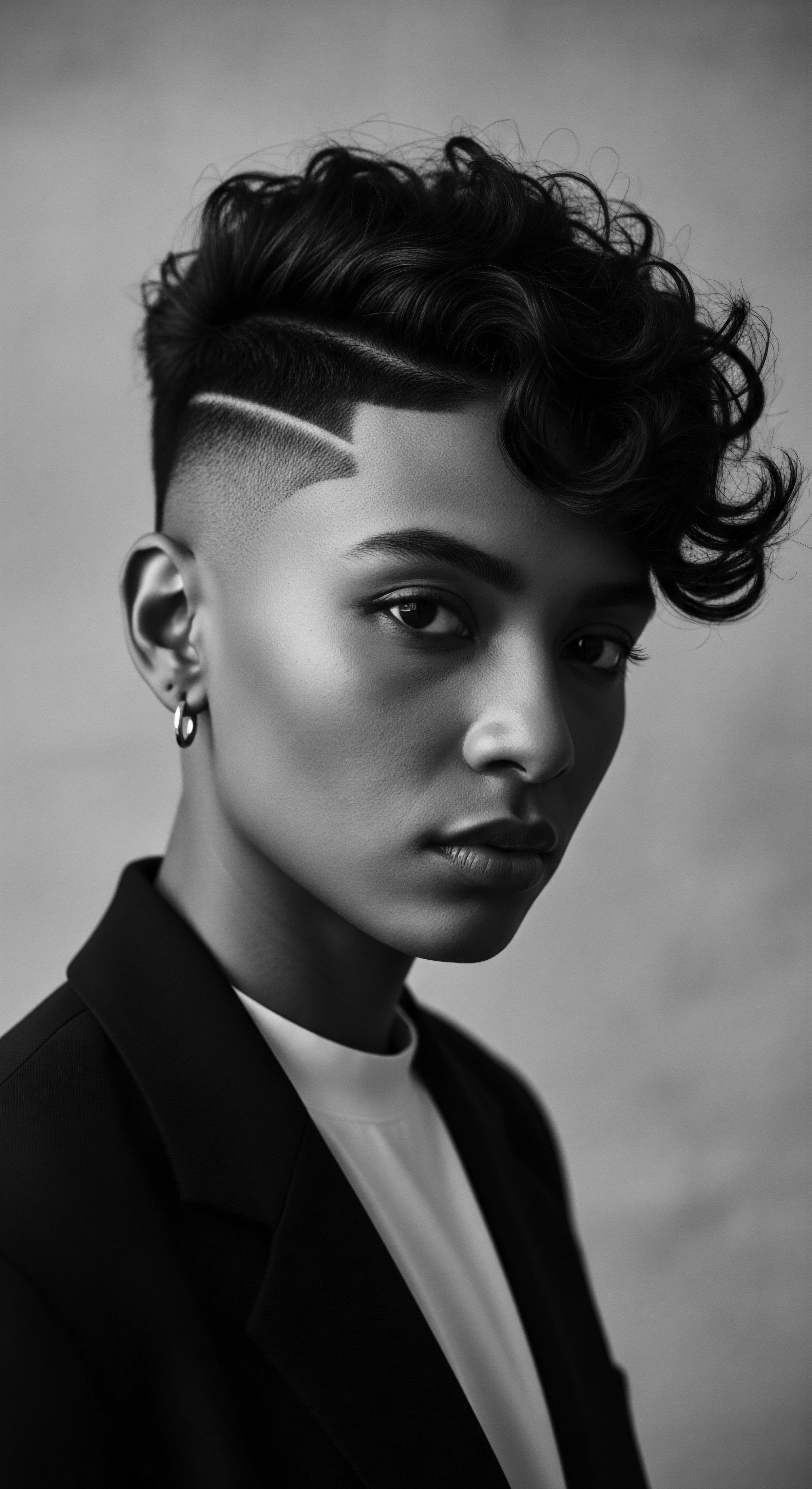
The Hands That Styled
The communal nature of hairstyling meant that the hands that worked on hair were often those of family members or trusted community elders. This practice fostered deep familial and communal bonds, transforming hair care into an act of shared intimacy and mutual support. The care and respect embedded in these interactions reinforced the idea of hair as a cherished asset, worthy of dedicated attention and safeguarding.
The purity of hair, then, also extended to the purity of the relationships and intentions surrounding its care, recognizing the transfer of energy and wisdom through touch. This enduring communal aspect has persisted into modern times, remaining an important way for families and communities to connect across generations.

Relay
From the foundational truths of textured hair and the rituals that gave it voice, we move now to the sustained regimen of care, where ancestral wisdom continues to shape our understanding of hair’s vitality and purity. The concept of hair purity, passed down through generations, was not simply about a static state, but about a dynamic process of maintenance and problem solving, rooted deeply in ancestral practices and holistic philosophies. These traditions recognized hair as a living extension of self, deeply interconnected with physical, spiritual, and communal well-being, demanding a regimen of continuous, intentional care.
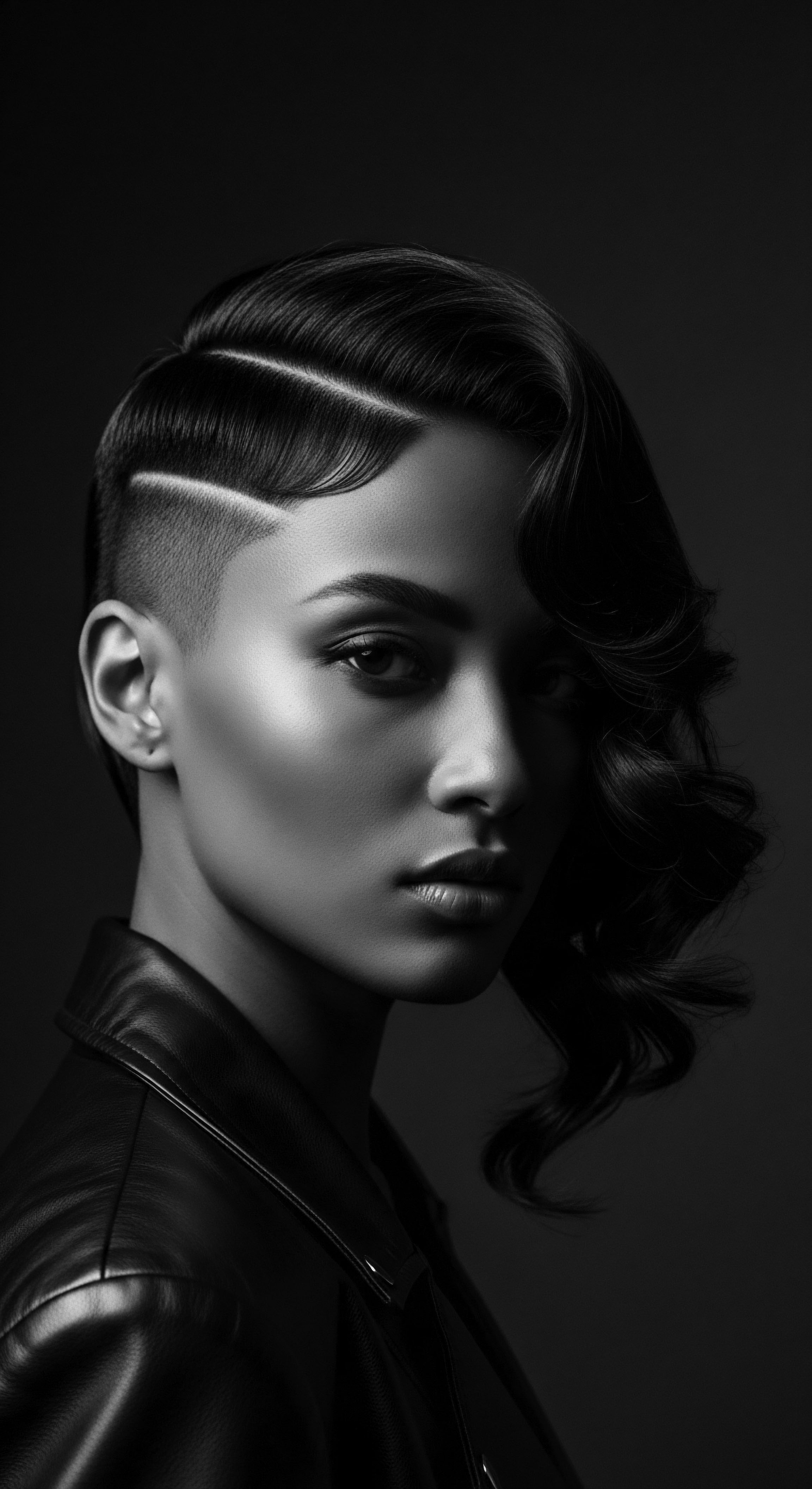
Daily Rites of Preservation
Ancestral daily and nighttime hair care routines were more than habitual acts; they were protective rituals aimed at preserving the hair’s inherent strength and spiritual integrity. The emphasis was on maintaining moisture, protecting delicate strands from environmental stressors, and ensuring the hair remained a vibrant conduit of energy. This deep understanding of hair’s needs, often derived from observation and passed through oral tradition, informed practices that resonate even with modern scientific understanding of textured hair’s unique structure and propensity for dryness.

How Did Nighttime Rituals Safeguard Hair’s Purity?
The practice of protecting hair at night, particularly through the use of head coverings, holds significant historical precedent in many African and diasporic communities. Headwraps, scarves, and later, bonnets, served a dual purpose ❉ they preserved intricate hairstyles, extending their life, and shielded the hair from friction and moisture loss during sleep. This physical protection was twinned with a spiritual reverence; as the head was considered the entry point for spiritual energy, covering it during the vulnerable state of sleep was an act of safeguarding one’s spiritual essence. This deep understanding of hair’s spiritual connection meant that protecting it was a daily act of reverence, ensuring its purity remained undisturbed, even during rest.
For enslaved Africans, these coverings became crucial acts of resistance, quietly preserving identity and heritage even when traditional styling tools or methods were denied. The act of wearing a head covering, therefore, symbolized not just physical protection, but a steadfast refusal to relinquish cultural integrity, maintaining a fundamental aspect of their inherent purity against oppressive forces.
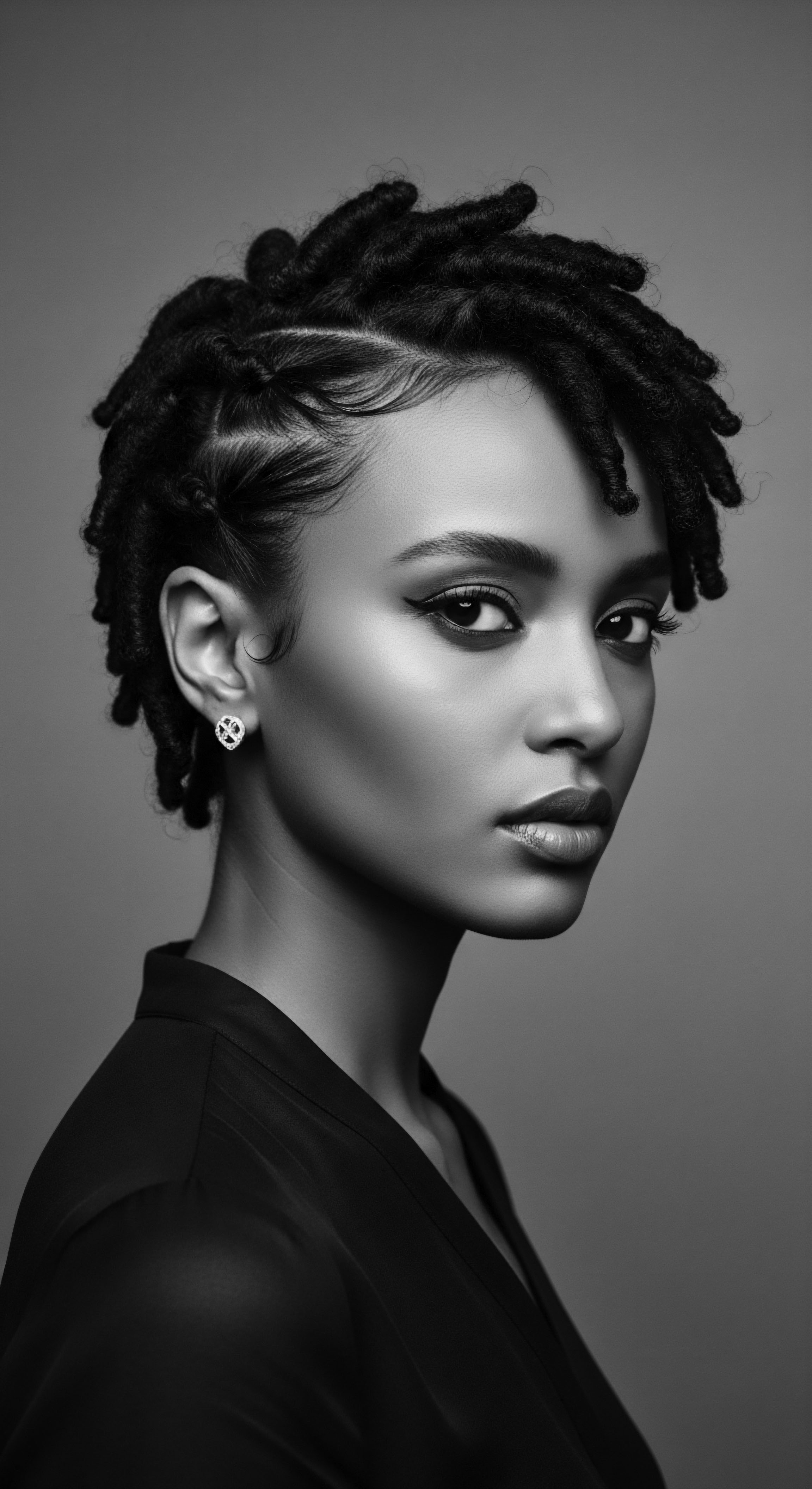
Ingredients as Living Ancestry
The efficacy of ancestral hair care is inextricably linked to the potent use of natural ingredients, often sourced directly from the land and imbued with centuries of collective knowledge. These ingredients were selected for their specific properties—moisture retention, scalp health, strengthening—and their preparation often followed ritualistic processes. This botanical wisdom, passed down through generations, represents a practical aspect of maintaining hair purity, ensuring that the hair was nourished with elements in harmony with its natural composition.
- Shea Butter ❉ Widely used across West Africa, this rich, emollient butter, extracted from the nuts of the shea tree, was a cornerstone for moisturizing and protecting textured hair and scalp. Its use reflects a deep understanding of natural emollients.
- Black Castor Oil ❉ Particularly significant in Jamaican traditions, this thick oil, extracted from castor beans, was valued for its purported ability to strengthen hair, promote growth, and soothe the scalp. It was seen as a restorative agent, contributing to hair’s vitality.
- Aloe Vera ❉ Used across various African cultures, the gel from the aloe plant provided soothing and hydrating properties for both scalp and hair, demonstrating an early awareness of botanical conditioners.
- Coconut Oil ❉ Prevalent in many tropical African regions, this oil offered moisturizing and conditioning benefits, protecting strands and adding luster. Its integration into care regimens speaks to a long-standing knowledge of its beneficial attributes.
Modern science now often validates the nutritive and protective qualities of these traditional ingredients, highlighting the enduring wisdom embedded in ancestral practices. The purity of these ingredients, directly from nature, mirrored the desired purity of the hair itself.

Hair’s Well-Being as Life’s Mirror
In many ancestral worldviews, the condition of one’s hair was a direct reflection of overall well-being, both physical and spiritual. A vibrant, well-maintained head of hair signaled good health, prosperity, and spiritual alignment. Conversely, neglected or damaged hair could suggest illness, misfortune, or a state of spiritual disarray.
This holistic perspective meant that caring for hair was not a superficial act; it was integral to maintaining balance within the individual’s life and their connection to the wider cosmos. This understanding of hair as a barometer of life’s energies reinforced the commitment to its purity as an aspect of complete wellness.

Addressing Hair’s Complaints Through Ancestral Wisdom
Ancestral communities developed nuanced approaches to common hair challenges, often drawing on herbal remedies, specific massage techniques, and dietary adjustments. These solutions were rooted in a deep empirical knowledge of plants and the body’s interconnected systems. For example, specific leaves or barks might be brewed into rinses for scalp irritation, or particular oils applied for dryness and breakage.
The purity in these solutions stemmed from their natural origins and their alignment with the body’s own healing mechanisms, seeking to restore balance rather than merely mask symptoms. The House of Shayaa, for instance, speaks to hair care as a spiritual practice, with diet rich in Omega-3 fatty acids, from fatty fish, chia seeds, and flaxseeds, seen as an elixir for moisture, promoting hair’s natural luster.
The daily care of textured hair, from protective rituals to the use of ancestral ingredients, always reinforced a holistic concept of purity—a state of balance and connection to heritage.
The practice of “feeding” the hair with natural remedies was a testament to the belief that hair, like the body, thrives on natural elements. This ancestral wisdom often saw the scalp as the primary site for hair health, focusing treatments there, a concept echoed in modern clean beauty approaches that prioritize scalp wellness for optimal hair growth.

The Holistic Web
The pursuit of textured hair purity in ancestral customs was never isolated from other aspects of life. It was intricately woven into a broader holistic framework that encompassed diet, spiritual practices, and communal support. Nourishing the body from within, through traditional foods and herbal infusions, was understood to directly influence hair vitality. Spiritual ceremonies and rituals, often involving the hair, reinforced its sacred status and contributed to a sense of inner peace that was believed to radiate outward through one’s physical presentation.
Furthermore, the communal aspect of hair care fostered mental and emotional well-being, as shared moments of grooming created spaces for intimacy, guidance, and collective strength. This interconnectedness underscored that true purity of hair was a reflection of a life lived in harmony with ancestral principles and community values.
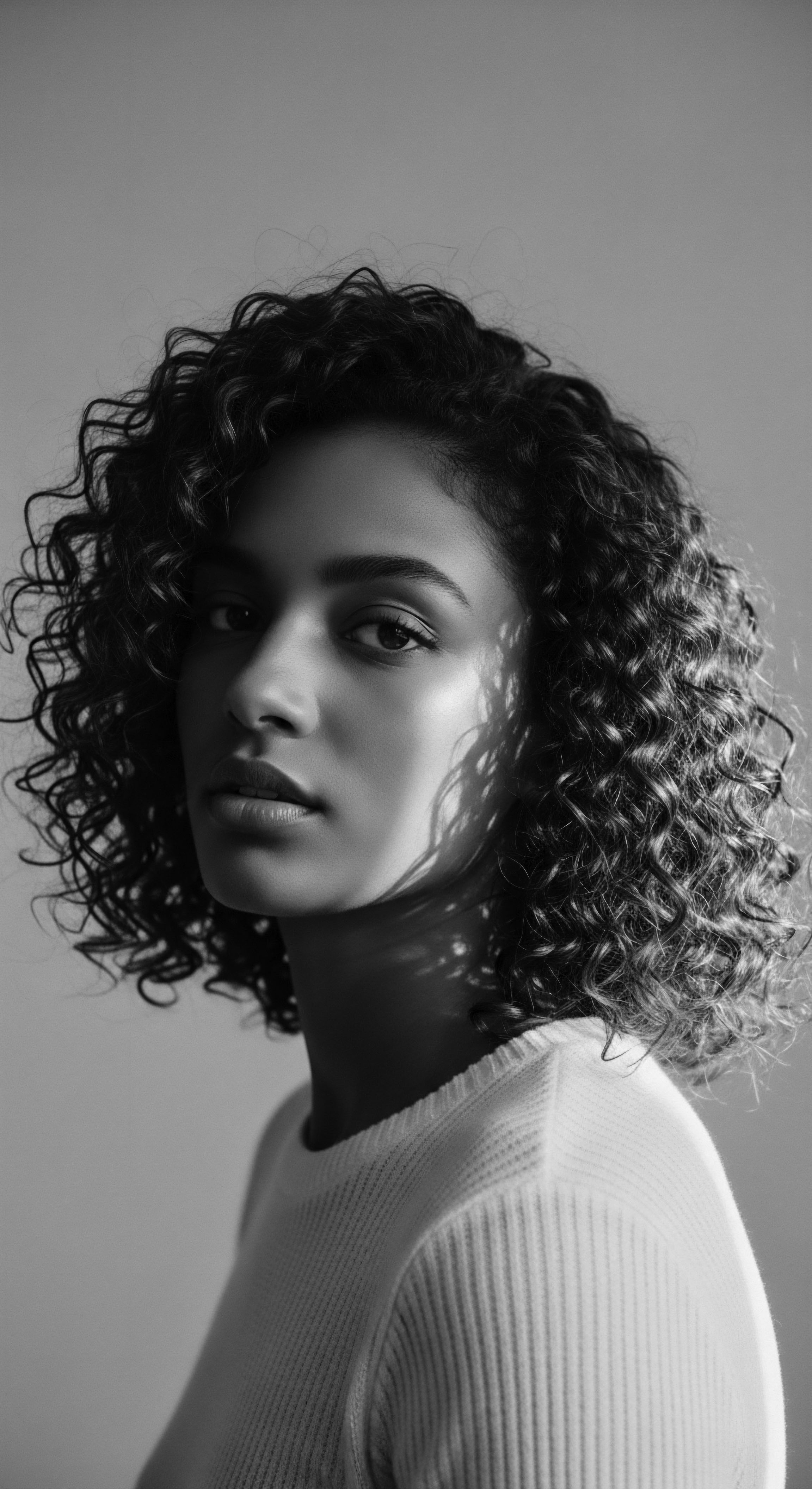
Reflection
As we pause from the intricate journey through ancestral customs and their shaping of textured hair purity, a profound truth remains ❉ the hair, in its myriad forms, is a living library. Each coil and strand whispers stories of resilience, artistry, and an unbroken connection to the past. The purity sought by our ancestors was not an unattainable ideal of flawlessness, but a deep, abiding respect for the hair’s inherent nature, its capacity for spiritual resonance, and its powerful role as a cultural anchor. This lineage of care, etched into communal memory and embodied in everyday practice, transcends mere aesthetics; it speaks to a sacred relationship between self, community, and the ancestral plane.
The textured hair on our heads today carries the indelible imprint of these ancient ways, a legacy inviting us to honor its authentic spirit, to tend to it with the same reverence and wisdom that has guided generations. Our hair, indeed, is an echo of the source, a tender thread that binds us to a grand relay of heritage, forever reminding us of the unbound helix of our identity.

References
- Afriklens. (2024). African Hairstyles ❉ Cultural Significance and Legacy.
- Bebrų Kosmetika. (2024). The Power of Hair in African Folklore ❉ Rituals and Traditions.
- Chimbiri, K. N. (2021). The Story of Afro Hair, 5,000 Years of History, Fashion and Styles. Scholastic.
- Colleen. (2020). The History of Textured Hair.
- Croydon Supplementary Education Project. (2024). The Story Of Afro Hair.
- Gale Review. (2021). African Hairstyles – The “Dreaded” Colonial Legacy.
- Historicaleve. (2024). Headdresses, Hairstyles, and Wigs in Ancient Egypt.
- Kodd Magazine. (2024). African hair tells a story and inspires the future.
- Leidenanthropologyblog. (2017). ‘Hairstyle Politics’ ❉ Decolonizing Beauty Standards.
- Lion Locs. (2024). What Is The Spiritual Meaning Of Dreadlocks?.
- LocsByBee. (2023). The History Of Locs.
- Marie Claire Nigeria. (2025). The Black woman as divine ❉ Sacred femininity in African beauty rituals.
- Nefer (nfr) Natural Skincare & Wellness. (2025). Holistic Wellness in Hampton.
- Noireônaturel. (2024). The History of Dreadlocks ❉ A Journey Through Time and Culture.
- Okan Africa Blog. (2020). The significance of hair in African culture.
- PsychoHairapy. (2025). Healing Hair Trauma with Afrofuturism.
- ResearchGate. (2024). Role of the Hair in Ancient Egypt.
- Safo Hair. (2024). Embracing the Roots ❉ Hair Care Rituals in African Cultures and the Val.
- Scientific Research Publishing. (2015). Rhetoric of Natural Hair ❉ Cultural Contradictions.
- The Kurl Kitchen. (2024). The Cultural Significance Of Natural Hair In Different Communities.
- Thirteen Lune. (2024). Beauty From the Root.
- YorkSpace. (2021). Braided Archives ❉ Black hair as a site of diasporic transindividuation Océane Nyela A Thesis Submitted to the Faculty of Gradua.
